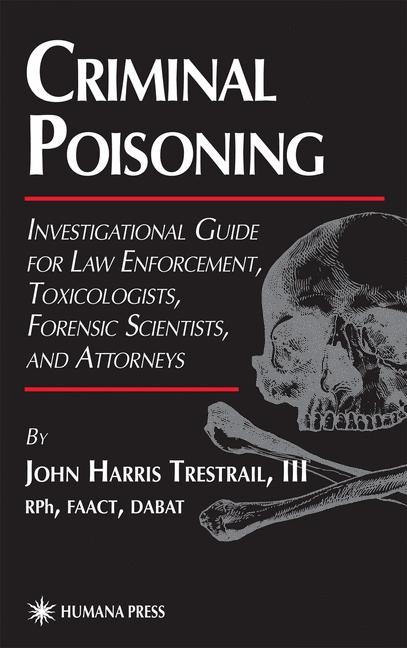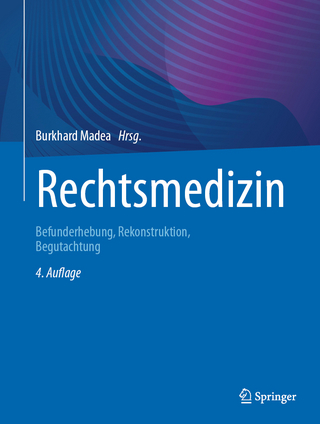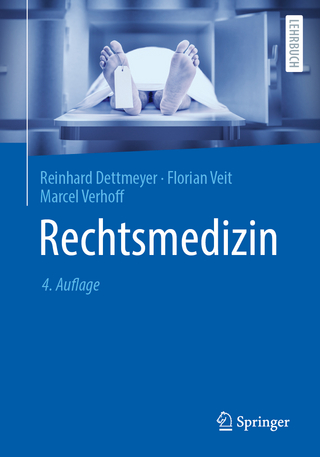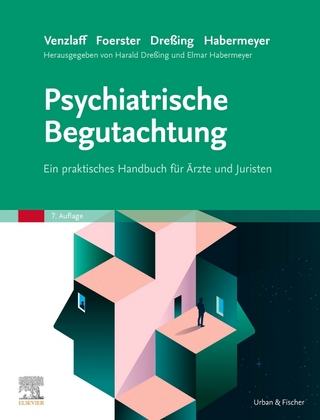
Criminal Poisoning
Humana Press Inc. (Verlag)
978-0-89603-592-8 (ISBN)
- Titel erscheint in neuer Auflage
- Artikel merken
In Criminal Poisoning: Investigational Guide for Law Enforcement, Toxicologists, Forensic Scientists, and Attorneys, leading forensic scientist John Trestrail offers a pioneering survey of all that is known about the use of poison as a weapon in murder. Topics range from the use of poisons in history and literature to convicting the poisoner in court, and include a review of the different types of poisons, techniques for crime scene investigation, and the critical essentials of the forensic autopsy. The author also examines what is known about poisoners in general (psychological profile, types, and statistical analyses) and their victims (who gets poisoned, investigative considerations, and classic symptoms of poisoning). Two chapters probe the problems of proving poisoning and convicting the poisoner in court.
Comprehensive and informative, Criminal Poisoning: Investigational Guide for Law Enforcement, Toxicologists, Forensic Scientists, and Attorneys offers forensic scientists, police and private investigators, forensic psychologists, and criminal prosecutors a unique one-volume summary of the knowledge and techniques needed to solve the near-invisible crime of poisoning and convict the perpetrator.
Chapter 1 - Poisoners Throughout History. Poisons in Ancient Times. Introduction. The Sumerians. The Ancient Egyptians. The Hebrews. The Asian Indians. Nicander of Colophon. Philon of Tarsus. Mithridates. The Greeks. The Romans. The Italian School of Poisoners. The French School of Poisoners. Poisoners in the Modern Era. The Rugeley PoisonerThe Philandering PoisonerThe Slight-of-Hand PoisonerThe Lambeth PoisonerThe Scorned PoisonerThe Stockyards BluebeardThe Mild Mannered MurdererThe Poisoning MiserThe First Scientific MurdererThe Playboy PoisonerThe Case of the Man Who Wouldn"t DieThe Poisoning PastorThe Poisoning Bank RobberThe Poisonous NeighborThe Accidental Poisoner for SexThe Poisonous RomanticThe ToxicomaniacThe Halloween KillerThe Minister Who Went MadThe Umbrella AssassinationThe Tylenol TampererThe Camouflaged PoisonerThe Angel of DeathThe Eccentric GeniusConclusion. References. Suggested Readings. Chapter 2 - Types of Poisons. Definitions. Characteristics of Ideal Poisons. Contrasts Between Poisons and More Traditional WeaponsHow Do Poisons Kill? Central Nervous System (CNS) Effects. Other Categories of Poisons. Elements of Poisoning Investigations. Access Knowledge Sources References. Suggested Readings. Chapter 3 - Poisoners. Types. Type S (where a specific victim is targeted). Type R (where a random victim is targeted). Misconceptions About Poisoners. Poisoner Schematic. Poisoner Thought Process. Psychological Profile of Poisoners. Public Perceptions of Poisoners. The Toxicomaniac. Statistical Analysis of Homicidal Poisonings. Most Common Poison Used. Poisoner"s Background. Poisoner"s Gender. Number of Victims. Poisoner"s Motive. Offender"s Conviction Status. Multiple Offenders on Victim(s). Gender of the Offender vs Number of Victims. References. Suggested Reading. Chapter 4 - Victims. Who Gets Poisoned? Investigative Considerations. Distinctive Pathological Findings. Classic Symptoms of Poisoning. References. Suggested Readings. Chapter 5 - Crime Scene Investigation. Physical Evidence. Investigative Considerations. Search Warrants. Poisoning Deaths Compared with Other Types of Violent Deaths. Investigating a Criminal Poisoning. Physical Evidence. Product Tampering. Analytical Toxicology. Analysis of Cremated Remains. How Did the Poison Get in the Patient? References. Suggested Readings. Chapter 6 - The Forensic Autopsy. Chapter 7 - Proving Poisoning. Key Elements to Be Proven. Statistical Analysis of Poisonings in the United StatesReferences. Suggested Reading. Chapter 8 - Poisoners in Court. Battery by Poison. Standard Defense Arguments. Poisoning Not the Cause of Death. Poisoning Not Homicidal. No Homicidal Intent. Substance Not a Poison. Accused Had a Reason to Have the Poison in His/Her Possession. Problems Proving Intentional Poisoning. References. Suggested Reading. Chapter 9 - Poisoning in Fiction. Chapter 10 - Conclusion. AppendixCommon Homicidal Poisons. Arsenic. Botulinus Toxin. Cyanide. Sodium Fluoroacetate. Strychnine.Thallium. Bibliographies. Poisoners Throughout History. Poisoning in Fiction. Forensic Poisoning. Analytic Toxicology. Index
| Reihe/Serie | Forensic Science and Medicine |
|---|---|
| Verlagsort | Totowa, NJ |
| Sprache | englisch |
| Maße | 153 x 229 mm |
| Gewicht | 450 g |
| Einbandart | gebunden |
| Themenwelt | Studium ► 2. Studienabschnitt (Klinik) ► Rechtsmedizin |
| Recht / Steuern ► Strafrecht ► Kriminologie | |
| ISBN-10 | 0-89603-592-1 / 0896035921 |
| ISBN-13 | 978-0-89603-592-8 / 9780896035928 |
| Zustand | Neuware |
| Haben Sie eine Frage zum Produkt? |
aus dem Bereich



